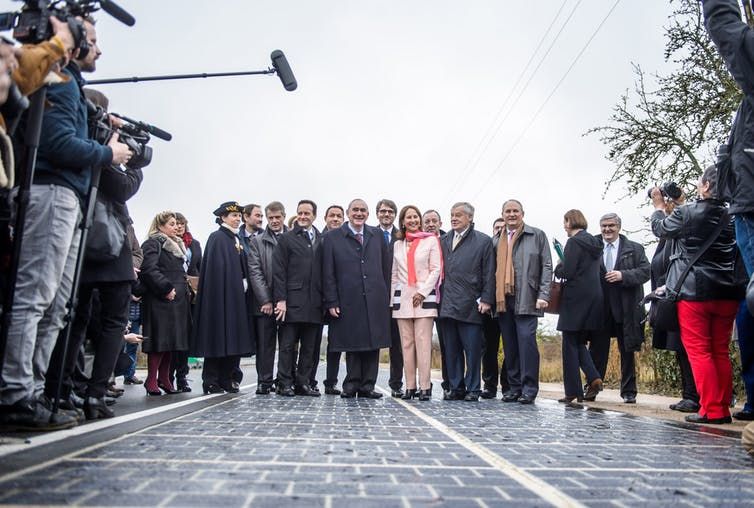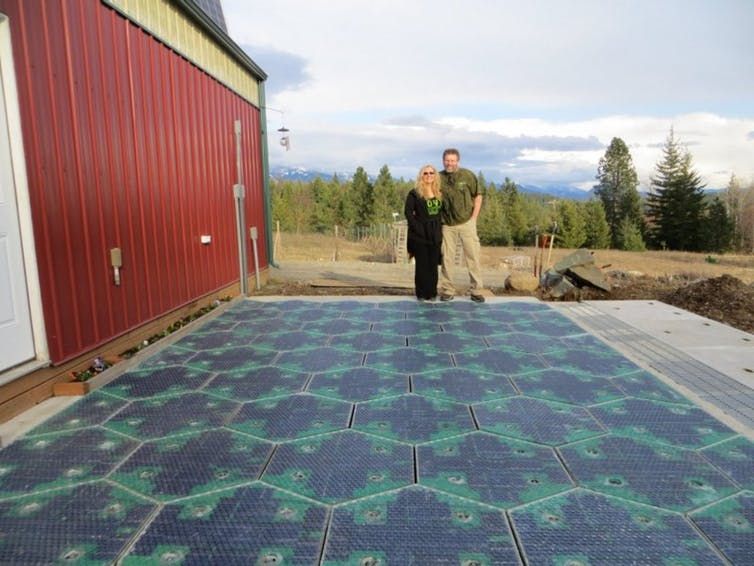If you remember, there was a campaign a while back that proposed the idea of fighting climate change with solar panel roads. The idea was to replace the tarmac on the road with solar panels. At that time, the campaign went viral and people lauded the whole concept. The idea underwent some road testing since then, and studies from the first results don’t look very promising. Didn’t we all see this coming?
This Is Common Sense
Logically speaking, a solar panel is supposed to placed directly in sunlight. That is the reason panels are put in the open and at a higher altitude so that there is no obstruction of the rays hitting on the panels. When you put them on the road, the solar panels are not at the optimal angle, which is going to cause them to absorb less solar energy and produce less power. They are even more prone to shade, especially in cities.
Not to mention the fact the panels have to be clean all the time to absorb the maximum amount of sunlight possible; but if they’re on the road, the panels will be covered by dirt and dust. To counter the dirt issue and to withstand the weight of the traffic, the panels would need far thicker glass than the conventional ones, which will further limit the sunlight they absorb. I mean, this is not rocket science!
The Technicalities
Even though the panels’ main job is to absorb sunlight and convert it into energy, they need to stay at an optimum temperature level to perform the task efficiently. Since the thick-glassed solar panels won’t have the luxury of air circulation, they will heat up more than a rooftop solar panel too.
First Results
The sample roads are supposed to generate 800-kilowatt hours per day, but the released data indicates a yield closer to 409 kWh/day, or 150,000 kWh/yr. To put things into perspective, an average home in the U.K. uses around 10 kWh per day. The road’s capacity factor—which measures the efficiency of the technology by dividing its average power output by its maximum potential power output—is just 4-percent.
Other Examples Across The World
Contrary to this setup, the Cestas solar plant near Bordeaux, which features rows of solar panels angled towards the sun, has a maximum power output of 300,000 kWs and a capacity factor of 14 percent.
An American company called Solar Roadways has developed a smart highway with solar panels, including sensors and LED lights to display traffic warnings about any upcoming hazards. It also has heating pads to melt snow in winter. The company has installed multiple SR3 panels on a small section of pavement in Sandypoint, Idaho. This is 13.9 m² in area, with an installed capacity of 1.529 KWs. The cost of the installation is given as $48,734, which breaks down to a cost per installed kW of $32,366, more than 20-times higher than the Cestas powerplant. The company itself estimates that the LED lights would consume 106 MWh per lane mile, with the panels generating 415 MWh, which is more than 25-percent of the power consumed by the LEDs. This would reduce performance even further. The heating plates are also quoted as drawing 2.28 MW per lane mile, so, if they run for six days, the net gains would be completely neutralized.
Conclusion
The first results are an indication of what a disaster this could be if pursued. Either we come up with an alternative way of installing the solar panels that could prove equally effective and efficient, or wait for some breakthrough innovation to happen for the road panels. Do you have any input on this idea? Share them in the comments section below.
Further reading
Read more technology news.


